SEARCH






|
|
|
|


To Thomas Vanoost , photography means writing, drawing or maybe painting with light. He loves to explore notions of chaos, time and instability. The central concept is a vision of the world as an ever-changing place and a very personal attempt to make sense from this chaos. Thomas expresses our relationship with time, as the different pictures composing his photographs are made at different moments in time, yet they are parts of the same final images.
Through this interesting interview, we might be able to discover more about this great artist and brilliant mind.
Briefly tell us about yourself, your hobbies and other jobs.
I was born in Belgium in 1982. I’ve always lived in Brussels, until a few months ago, when I moved to a place near to Namur. I am married and I have a 4 years old son. I originally studied philosophy and sociology at the university. Later on I also studied financial risk management. Meanwhile, I was also studying photography and film lab processing (it was in the last days of film photography, and digital was widely thought to be only the new fad back then… how wrong we were!). I worked as a wedding photographer for a period in the 2000's when I was a student, but I wasn’t very good at it. I finally went working in the investment bank industry, where I occupied a lot of different positions over the years.As for my other hobbies, when I’m not out shooting the streets, I love to hunt for antiques and artworks with my wife. We are both collectors at heart, and nothing feels like finding a true gem in the dirt. I also read a lot, mostly science-fiction and philosophy. I love baroque and classical music, especially J.S. Bach and Russian composers of the 20th century. And I try to swim and take long walks every day.
How has your history and life experiences affected your photography?
Which are your most important experiences that has influenced your art?
I have always used photography as a visual language to express things that I couldn’t express with words. A few years ago, my life was a total mess. I wanted to express that sense of chaos and instability, but no matter how hard I tried, I couldn’t quite explain what I was feeling like with words. I then decided to grab my camera, and tried to express it visually. That’s how I started experimenting with multiple exposure photography. And it worked. Through multiple exposure photography, I could express that sense of stress and chaos inherent to the world we live in much better than I could with written or spoken words. Then I had the chance to meet some wonderful people who believed in my photography and gave me the opportunity to exhibit my work internationally and grow as a photographer.
What first attracted you to photography?
I’ve had cameras around as long as I can remember. My first one was a small 110 pocket camera back in the 80’s. I don’t have it any more, unfortunately, but I still have the photos I took with it. I had several other cameras over the years, from instamatics to compacts to second hand SLR’s. However, I first got attracted to serious photography in my early 20’s. I felt the need to create art, but unfortunately I was totally unable to draw or paint. Photography was an obvious choice, especially since it involves a lot of solitary time in quiet darkrooms back then. I enjoyed such peaceful time out of the world immensely. The digital workflow I use today is certainly much more convenient, but I sometimes miss the introspective time in the darkness of a lab. I do not miss the smelly toxic chemicals though!
Moreover, photography means writing, drawing or maybe painting with light. I’ve always been fascinated by this notion that one can create art using the light. It’s something I cannot really explain, but I can’t help finding this idea incredibly romantic.
Describe your overall photographic vision.
My current work tries to explore the notions of chaos, time and instability. It finds its roots in ontology, the study of the nature of being, and in phenomenology, the branch of philosophy that studies the structure of perception. The central concept at its heart is based on the philosophical idea that all reality around us is utterly chaotic and unstable. This vision of the world as an ever-changing place is not exactly new. Heraclitus of Ephesus already stated this very idea in the 5th century BC (with his concept of "panta rhei", which means "everything flows"), and it remains more actual than ever today. For better or worse, we live in a world that is evolving at a very rapid pace, and we can all feel it. However, despite its inherently chaotic nature, we human beings tend to perceive the reality around us as something more or less stable. We need a sense of structure and permanence if we want to remain sane. This is highly paradoxical. On one hand, reality presents itself as stable, but on the other hand, we can feel it as intrinsically unstable. I call this dichotomy the great ontological treachery. My photography is a very personal attempt to make sense from this chaos. I try to restore a kind of balance by visually expressing the concepts of chaos, stress and instability, and to question our way of seeing the world as a stable place. By superimposing several exposures, I try to convey that "panta rhei" feeling that the world is an ever-changing place.
I also try to explore our relationship to time, as the several pictures that compose my photographs are always made at different points in time, yet they are parts of the same final image.
Why are you so drawn by creatively edited photography?
As I explained earlier, this process allows me to express things I wouldn’t be able to express otherwise. Working with multiple exposure photography allows me to play with space and time (as all photos visible in the final image are slightly shifted in both space and time) and to create a feeling of everything being unstable and uncertain. This is something I’ve never been able to do with other types of photography.
What is more important to you, the mood,/story behind your images or the technical perfection?
I’m much more interested in creating something I find meaningful than in technical perfection. What is technical perfection anyway? Is there such a thing in art? Isn’t it all supposed to be highly subjective and personal?
We live in a very industrialized and standardized world today, where everything looks the same. Take a look at the cars in the street, or our clothes, or the smartphones in our pockets… they all look the same! That’s the issue with what one could call technically perfect photos, they all look the same. They are great, sure, but they all look a bit too standardized for my taste. Same beach in Iceland over and over again, same waterfall, same Tuscany landscapes, same portrait of an old man in Bengladesh… It feels like the photos that can escape this standardization are the ones that embrace technical imperfection, the ones that are grainy, blurry… That technical imperfection makes them more effective as artwork. My photos probably aren’t anything near perfection, but I try to make them look somewhat unique. I want them to mean something, to me at least, and that’s the only thing that really matters.
What generally is your relationship to your subject matter beyond being an observer?
Even though there’s at least some kind of human presence in almost all of my photos, people as such aren’t exactly my subject. The subjects of my photographs are mostly cities, moods, time, contemporary life, and the idea of chaos. People are inhabitants of what I’m photographing, and thus appear in my photos. I realize I may sound extremely cold and distant in saying so, but that’s actually not the case at all. What I mean is that I do not photograph human beings, but I try to make pictures of the human experience in today’s world. My relationship to my subject matter may, therefore, be compared to the one of a philosopher might have with the subject he or she is thinking about.
Do you prepare carefully the locations where you are intending to photograph?
Absolutely not. I’m much more relying on photographic serendipity, walking around until I find something that catches my eye. It might be light, shapes, people, everything, really… I then work the scene until I get something interesting. Sometimes I do, sometimes I don’t. I take great care of working out the composition of my pictures though. I tend to love some locations (such as the spiral stairways in Rogier metro station in Brussels, or the kinda steampunk stairs (in Namur railway station), and I get back there again and again, always trying to create something new from the same place.
Sometimes, I come across a place and I think ‘wow', I could do something 'here’ but for one reason or another, nothing happens. Maybe the light is flat and boring, maybe no one comes in the frame… I then I return to that place until I finally could create the image that I first envisioned. I guess one can say I’m perpetually scouting potential locations, in a sense.
What gear do you use (camera, lenses, bag)?
I used to be a big fan of Canon SLR’s, but I switched to mirror-less in 2013 and never looked back. These days, I almost only use a Panasonic Lumix GX80, with it’s incredibly small stock 12-32mm lens. I love this setup because of its extremely small form factor and understated looks. Yet it’s a really capable camera inside. It totally goes unnoticed, and it allows me to take photos in places where I could never shoot with a big DSLR. I often muse with the idea of getting a bigger and more professional lens, but that would ruin the point of having a very small and portable system so I stick with my small kit zoom for the time being.
I also have quite a large collection of cheap lenses, some quite exotic (such as adapted CCTV lenses, vintage soviet lenses and so on) but finally, 95% of the time I use my small stock lens. The small size and light weight are very important criteria for me, as I carry my gear with me all day long, every day. I carry my gear in a Think Tank Urban Approach 10, which doubles as a day bag to carry my other stuff as well.
What software do you use to process your images?
Adobe Lightroom Classic CC and Photoshop CC. I also sometimes use Nik Collection filters, with some custom made profiles.
Can you tell us something more about your work flow?
One of the question I get asked over and over (at least 3x a week) about my multiple exposure photos is ‘is it done in camera or in photoshop ?’. My response is always the same : ‘why? Does it matter ?’. Back in the days of film, there was indeed a technical difference, but that’s not the case any more, since the technical process is mostly the same whether it’s made in camera or in post-production. The only real difference being that doing multiple exposure in-camera means that part of the creative process is outsourced to an algorithm programmed a few years ago by a team of Japanese engineers. Now, the real answer is that it depends. I actually use several different techniques depending on the results I want to achieve, the time constraints, the ambient light, and several other parameters. Sometimes I use the in-camera mode, sometimes not. Sometimes both. My keepers are then sorted and edited in Lightroom for things such as light balance, levels, etc… and then edited in Photoshop.
What is your most important advice to a beginner in creatively edited photography and how do you get started?
Try to find your own style, your own voice, and follow it. Make it personal. It is art, and art must be personal. It must be meaningful to you if you want it to be meaningful for the world. Never hesitate to experiment, do wild things, no matter how un-orthodox they might appear. Don’t be afraid to make mistakes. There are no limits, especially with the tools available today. But don’t forget art has a long history, and it’s always worth knowing at least a little bit of it. Share your work and ask for feedback, but believe in yourself no matter what.
Who are your favourite photographers and more importantly, how has your appreciation of their work affected how you approach your own photography?
In spite of my personal style and work with multiple exposures - not being exactly orthodox street photography according to purists - I consider myself a street photographer first and foremost. My playing field is the street, and as such I’ve been mostly influenced by the big names of street photography of the 20th century, and of course by the following generation of street photographers shooting in colours, such as Martin Parr or Joel Meyerowitz. However, this influence is more palpable in terms of framing and composing, and not really in my relationship to people.
Long before that, however, the one person who truly influenced me as a photographer was my photography teacher back in the early 2000’s, Chantal Noël, who teached me to read the light.
I also had the chance to exhibit my photos just next to living legend René Groebli last year, and I must say his approach of temporality in art photography has been hugely inspirational in my own work.
Is there any specific photo taken by another photographer that has inspired you a lot and why?
I couldn’t actually point to one specific image. Of course, I’ve been influenced by a lot of different artists, primarily street photographers, but it’s more like a general influence, and I couldn’t really pinpoint one specific image.
On 1x.com, I particularly enjoy the work of Carla DLM and Carmine Chiriaco which is truly incredible and very inspiring.
Are there any specific directions that you would like to take your photography in the future or any specific goals that you wish to achieve?
I am currently working on a new series of panoramic multiple exposure photographs in which I try to explore the notions of symmetry vs chaos. Some of the first ones have been published on 1X already, but you can expect to see more of them in the next weeks.
I’m also working on a new exhibition, and I’m trying to find new exhibition spaces for the upcoming months, especially in Asia and North America.
Describe your favourite photograph taken by you and why it is special to you?
That’s a difficult question. I would say my favourite one would be one I’ve not yet taken. If I should chose only one from my portfolio, I’d pick Road Trip – after the rain because of it’s incredible light and dynamic. It’s also one of my first multiple exposure photographs, and the one that made me truly realize the potential of this technique for what I wanted to tell through my photography. It was definitely a pivot point in my work.
Is there anything else you wish to add and what do you think about 1X as a home base for your work?
1X is a truly unique website. It’s certainly the home base of many of today’s best artists using photography as a medium, but my favourite feature is the curation process. It can be frustrating at times when a photograph you particularly love gets rejected, but it is also an invaluable tool. As artists, we tend to be quite partial about our own work (I am, at least) and editing is certainly one of the most difficult parts of the workflow. While all good photos won’t automatically be published, when a photo passes the curation process, you can be pretty sure it’s a strong one, worth adding to your portfolio. This has been extremely helpful to me, and it still is.
 | Write |
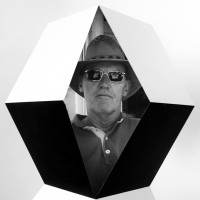 | Hans-Wolfgang Hawerkamp PRO much interesting article and a wonderful Collection of inspriring work, congratulations and thank you so much Thomas and also a big Thank to Yvette |
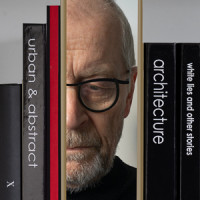 | Luc Vangindertael (laGrange) CREW Een mooi verhaal en prachtige beelden. Sterk hoe je fotografie als "therapie" gebruikt, die gedrevenheid voel je in je beelden. Hartelijk gefeliciteerd en good light Thomas ! |
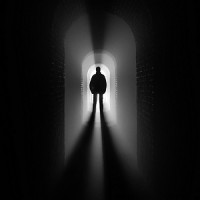 | Marc Huybrighs PRO Refreshing photography Thomas. Thanks for giving us a glimpse of the thoughts behind your amazing pictures. Wish you al the luck and succes for the future.
Also thanks to Yvette to share this interview. |
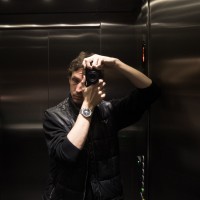 | Thomas Vanoost Thank you very much Marc ! |
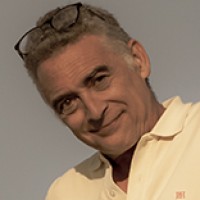 | Martin Zalba A great interview with a great "philosopher" of current photography. Wonderful images that, after reading your interview, acquire a deeper meaning. Congratulations for your work.
Thank you very much Yvette, for bringing us so close to this great artist, as always, sensational your work! |
 | Yvette Depaepe CREW ;-) Thank you Martin! It was my pleasure to interview Thomas as "philosopher" and great artist, indeed. Cheers, Yvette |
 | Thomas Vanoost Thank you very much for your kind words, Martin ! I certainly don't have the pretension of being a great philosopher, though. I'm just trying to say something about the world that I still couldn't quite explain through words and concepts. I guess that's precisely what art is for. |
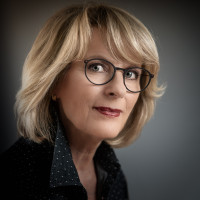 | Ute Scherhag PRO A strong and interesting interview. Thank you, Thomas, for the insight into your way of working and your view of photography. |
 | Thomas Vanoost Thank you very much Ute. |
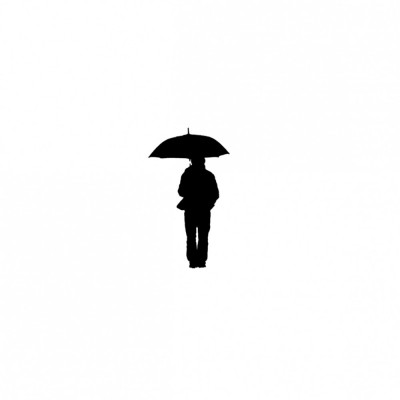 | Massimo Della Latta Splendidi lavori. Complimenti Thomas . |
 | Thomas Vanoost Thank you very much Massimo ! |
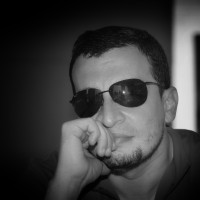 | Ahmed Thabet PRO Congratulations, Thomas, you are one of the most influential photographers on the 1x page, myself I have been always taken with your image which I like to name it as psychological dynamic art which really beyond just captures stills to dig deep in the personality of the artist himself and I think this you clarified in your article, you still mystery and you made it more by your statements. thanks for you and for Yvette as well. |
 | Yvette Depaepe CREW Thank you, Ahmed ;-) |
 | Thomas Vanoost Thank you very much Ahmed. 'psychological dynamic art'... I like the wording, it fits my goals and objectives quite well ! |
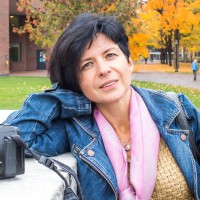 | Olga Merrill Congratulations , Thomas ! I love creative works include works with multi-exposures ( i use multi-exposures myself ) , It's great that you made your own style and i agree with your words - well said and wonderful artworks ! Thank you Yvette for such nice interview ! My best, Olga |
 | Yvette Depaepe CREW Thanks, dear Olga! All pleasure was mine ;-) |
 | Thomas Vanoost Thank you so much Olga |
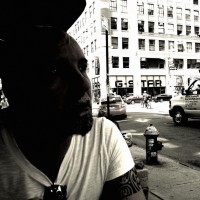 | Carmine Chiriacò CREW congrats Thomas ! |
 | Carmine Chiriacò CREW thanks so much for your words Thomas !!! I love so much all your works |
 | Thomas Vanoost Thank you very much Carmine. I truly find your style extremely interesting and inspiring. Cheers ! |
 | Thomas Vanoost Thank you so much for this great opportunity, Yvette! |
 | Yvette Depaepe CREW You're welcome, Thomas! |
 | Yvette Depaepe CREW Thank you for this most interesting interview, Thomas. It was a real pleasure to discover more about you and your unique photographic style. Congratulations and cheers, Yvette |